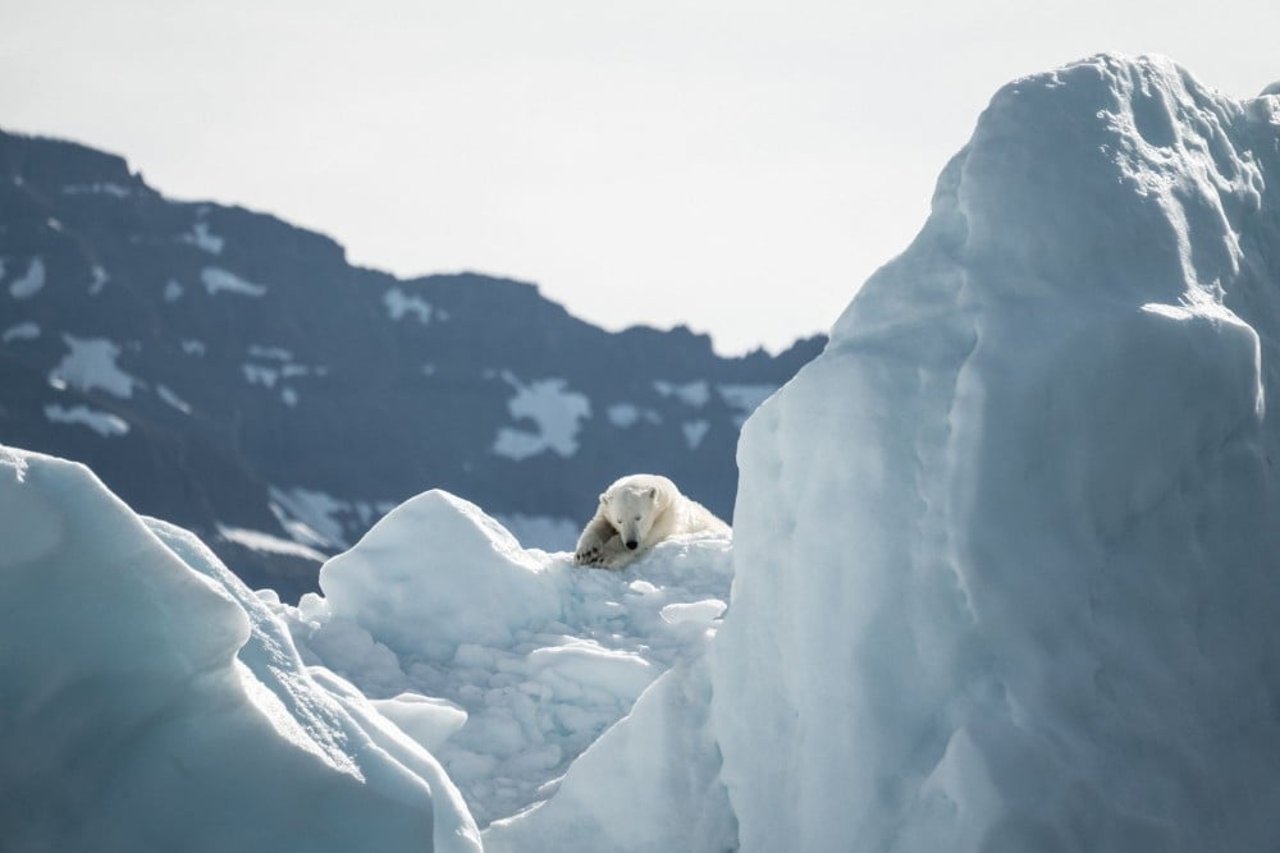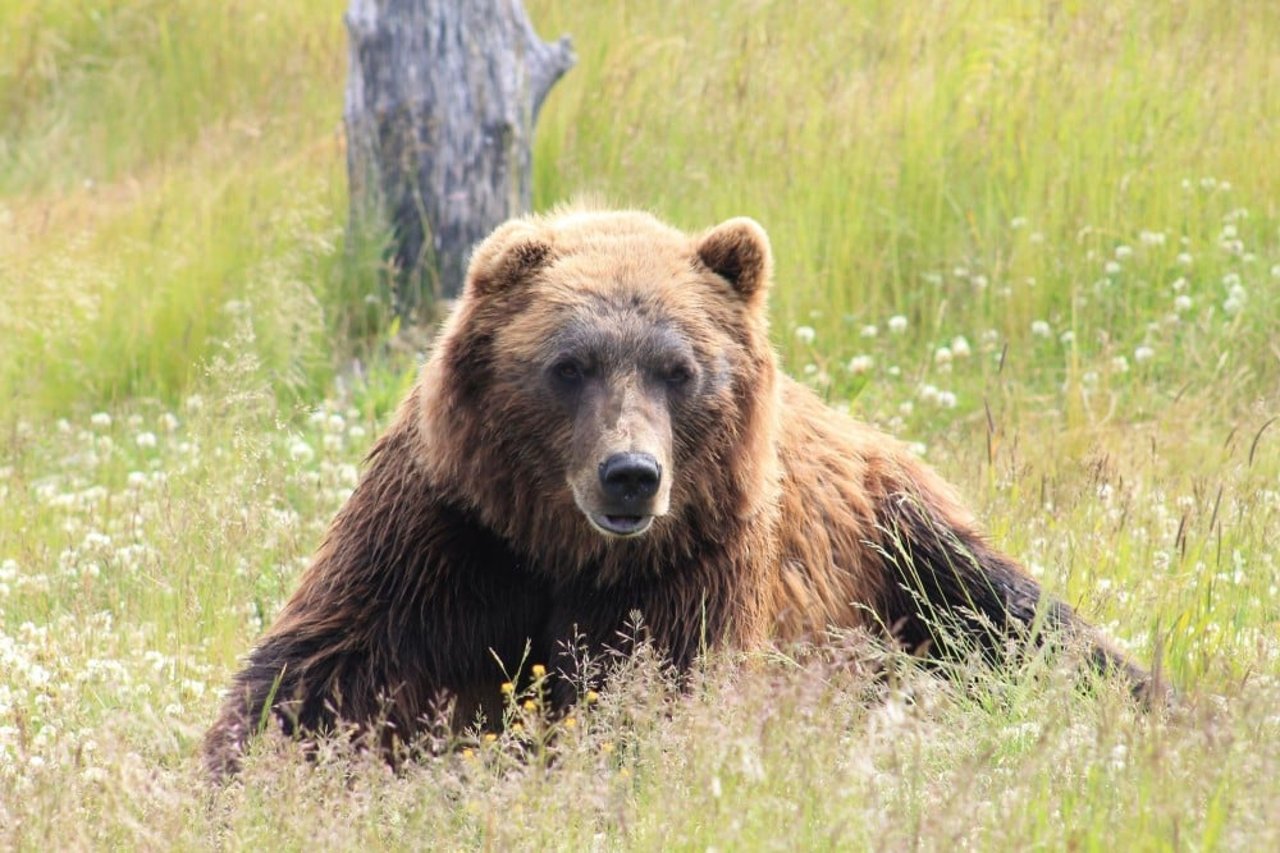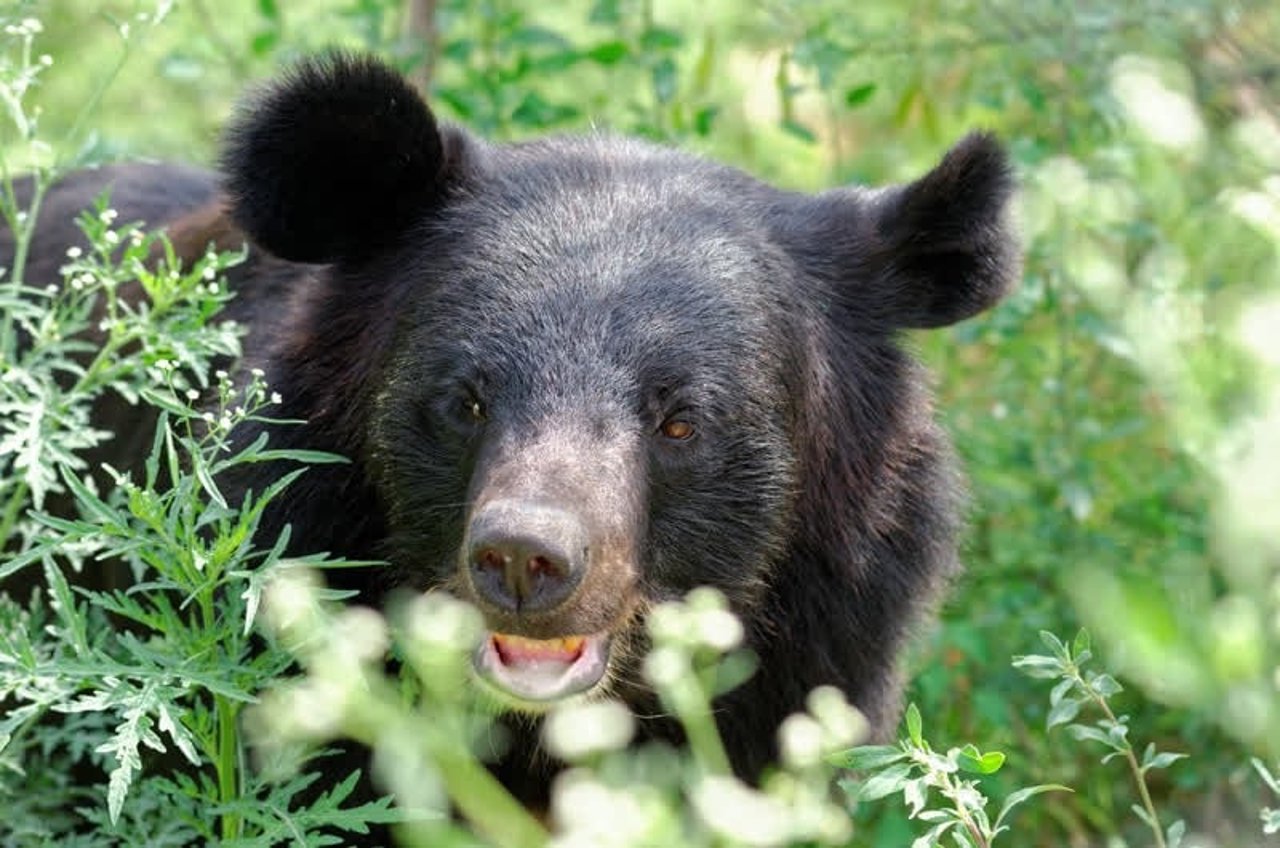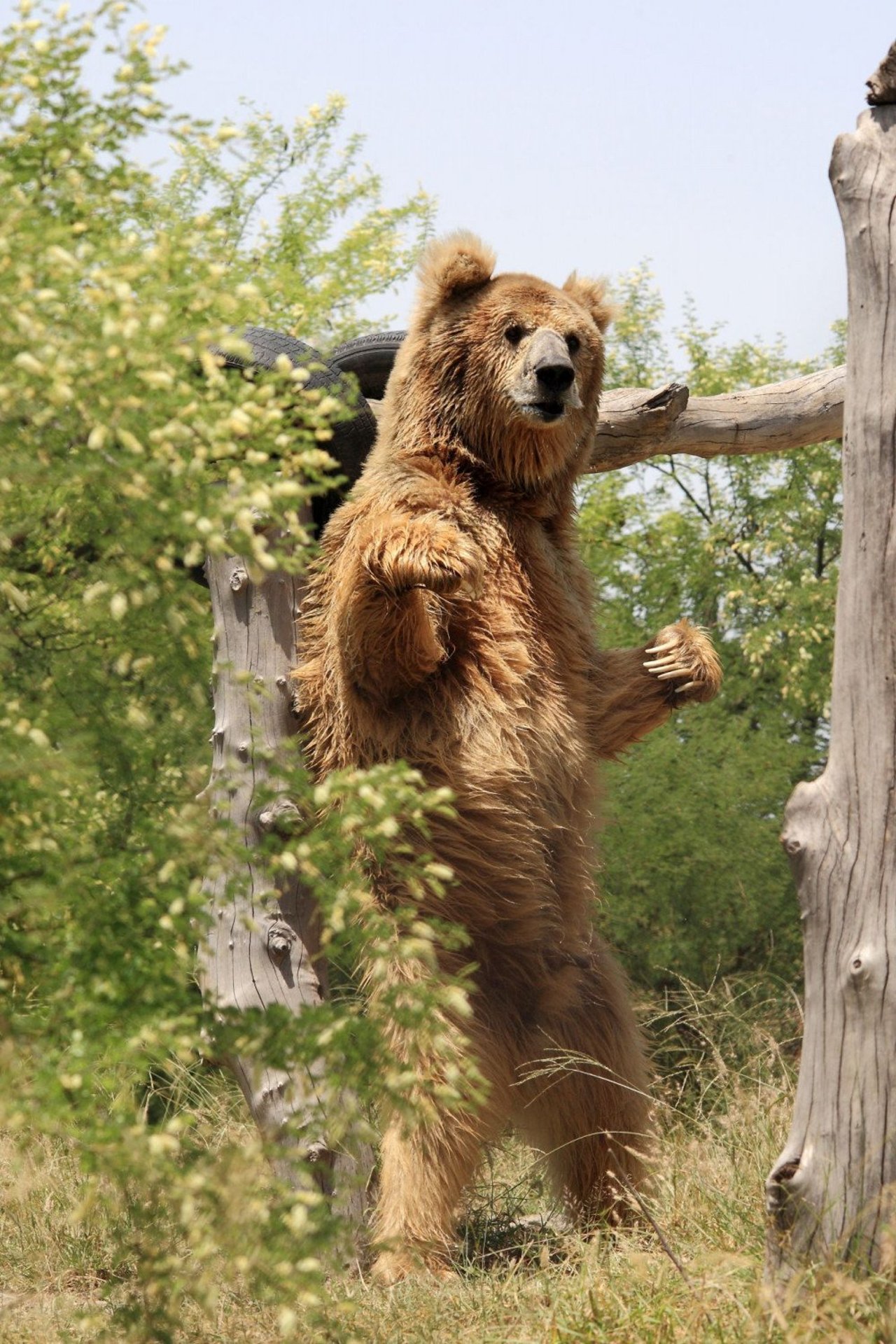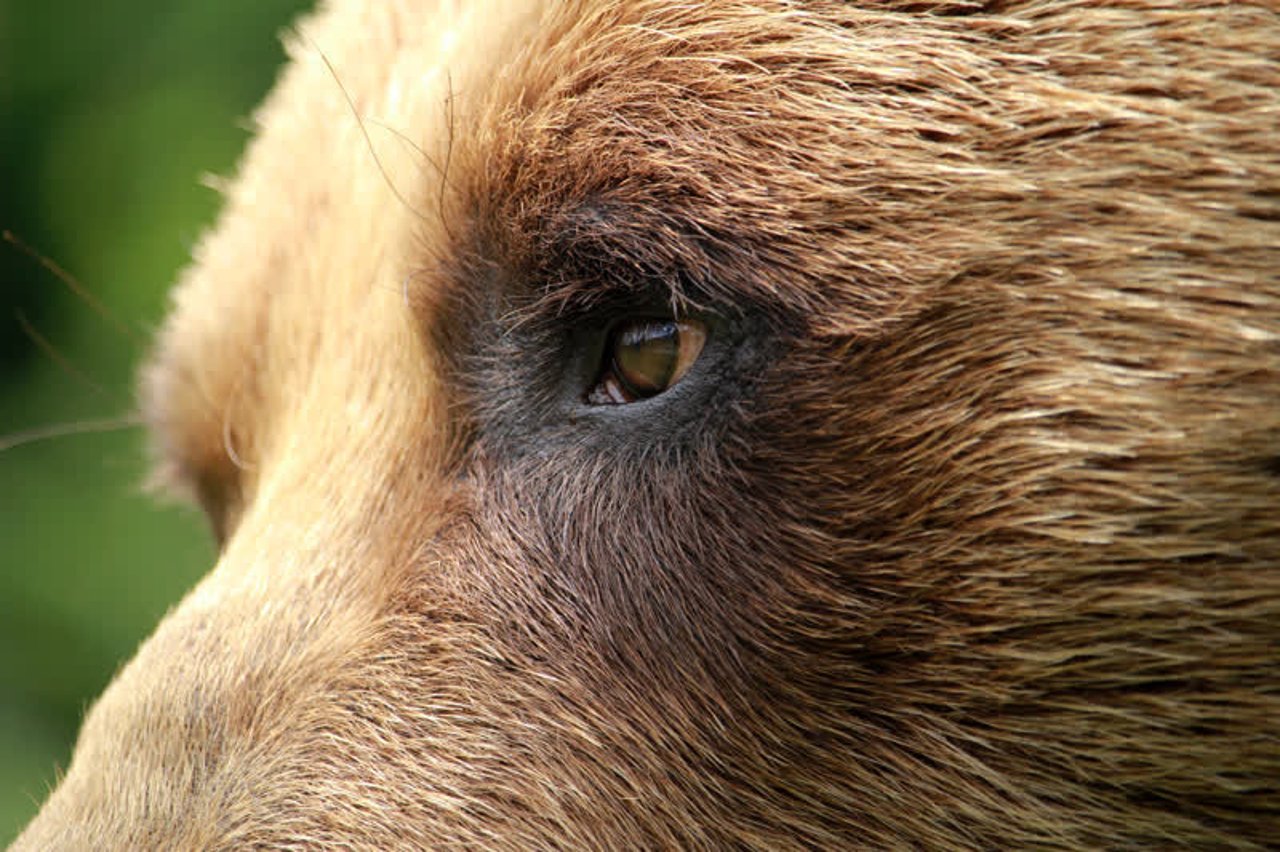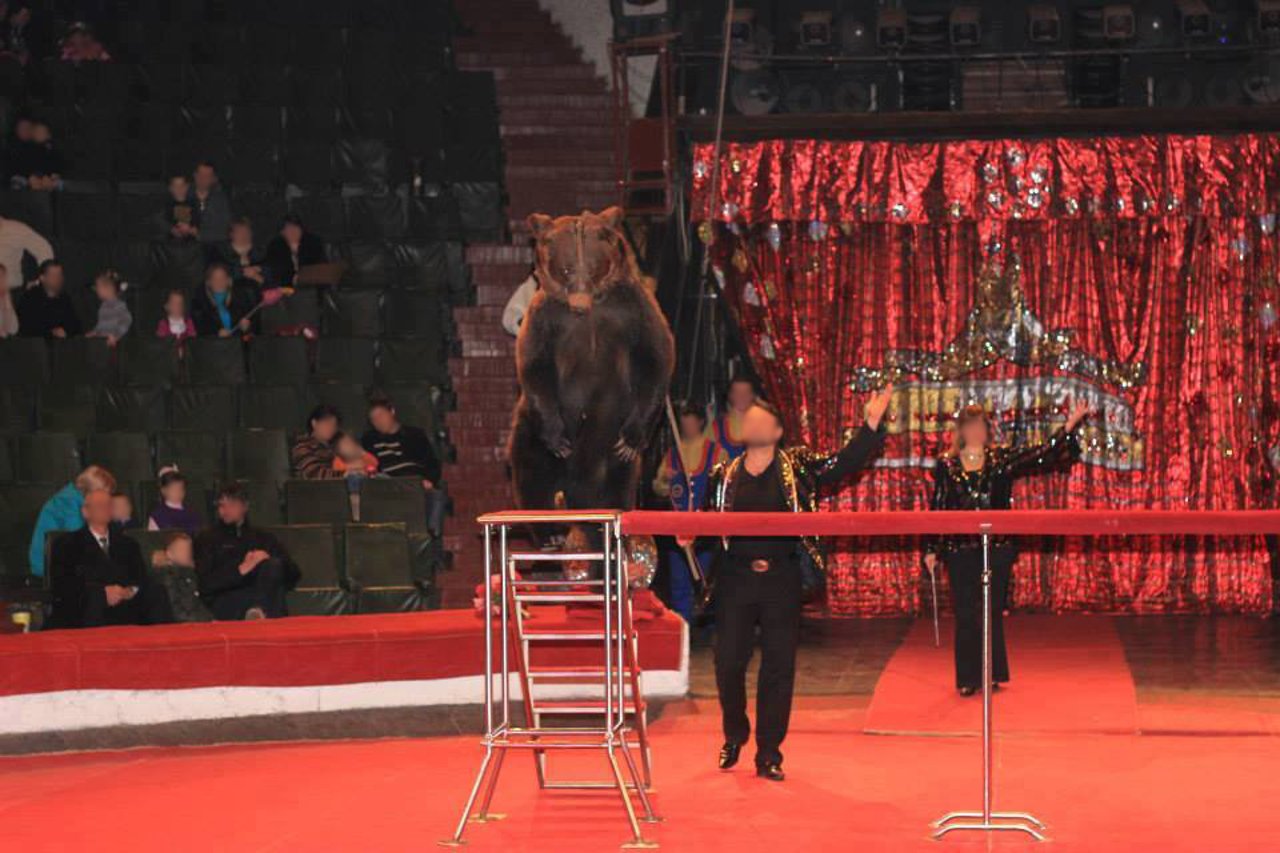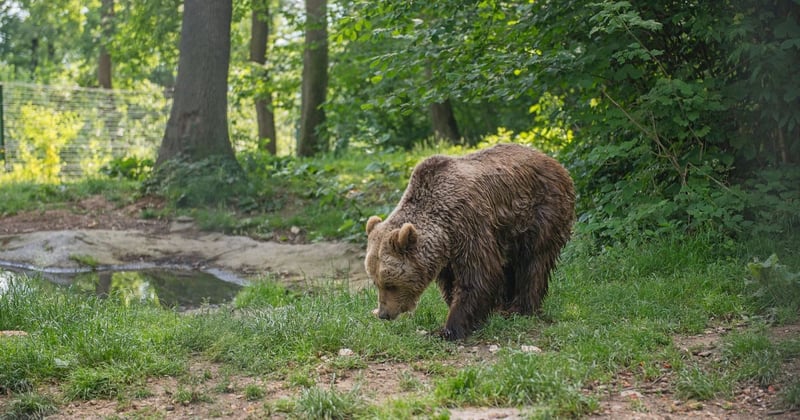
Bears are iconic animals who have captured the attention (and hearts) of many over the years. Here are five bear facts you may not have known!
Bears are among the most beloved wild animals. World Animal Protection has been working to protect bears for more than 30 years from cruelty and abuse in the entertainment and traditional medicine industries. The following fun facts about bears are just a few reasons why these mighty, lovable animals need our protection. Read on to learn more about bears and what you can do to help them.
1. Layers on layers: Bears have thick, layered coats
Bears are certainly big and fluffy, but there’s a lot more than meets the eye!
A polar bear’s coat is made up of two unique layers: The shorter coat provides insulation from weather, while the longer coat prevents water from reaching the short coat layer and skin.
Each layer serves a unique purpose and allows bears to thrive in frigid conditions.
2. Bears are big, strong, and fast!
Grizzly bears possess a biting force of over 1200 PSI, which is enough to crush a bowling ball or an iron skillet.
Adult grizzly bears can run up to an incredible 40mph—the same pace as a greyhound—and would break the speed limit on many roads in the US!
Polar bears, the largest of all bear species, can weigh between 900-1500 pounds and grow approximately 6-10 feet long!
With all of these incredible physical traits, it’s no wonder that bears have proven themselves to be dominant predators in the wild.
3. There are eight bear species in the world
There are eight different species of bear: North American black bears, brown bears, polar bears, Asiatic black bears (also known as moon bears due to the white, crescent-moon-shaped marking on their chests), Andean bears, panda bears, sloth bears, and sun bears.
Each species is recognizable by its distinct size, markings, and characteristics.
For example, sloth bears have adorable rounded ears, a cream-colored snout, and a unique "V" or "Y" shaped white mark on their chests.
4. One small step: Bears can walk on their hind legs
Bears can walk a short distance on their hind legs. Bears typically stand on their hind legs to get a better view or scent of what’s in front of them.
This ability is cruelly exploited in bear dancing, as bears are able to shuffle in a way that makes it seem like they are “dancing.”
5. Bears have a high IQ
Perhaps one of the lesser-known facts about bears is that they are among the most intelligent land animals in North America. They have the largest and most complex brains compared to other land mammals their size, and they rely on this brain for a number of behaviors.
For example, grizzly bears can remember hotspots for food even after ten years, and some have even been observed covering their tracks or hiding behind rocks and trees to avoid detection by hunters. Grizzly bears have also learned to camouflage their scent by rolling around in rotting flesh to sneak up on prey.
Bonus Fact: Bears need your help
Around the world, bears have become subject to an array of exploitation. This includes bear circuses, bear baiting, bear bile, and bear dancing. While this is our least favorite fact about bears, it’s also one of the most important — bears and other wild animals need our help to escape captivity, cruelty, and abuse.
We’re working to end the abuse of wild animals used for entertainment, but we can’t do it without your support. Give today to help bears and other animals in need, and sign up for our email list to learn about other ways to advocate for animals.
